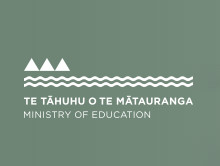Assessment Opportunities and NCEA Links
The Whāinga Paetae for taumata 6 are in the inside cover of each text. The table below illustrates the relationship between the Whāinga Paetae, one section of the resource, He Wahakura and elements of the Achievement Standard at NCEA Level 2, as examples of how this resource can be used to develop assessment opportunities.
| Whāinga | Evidence and examples in the text | Paerewa |
| Ka tirohia ngā uara me ngā whakapono o iwi kē, ka: | He Wahakura |
MAS90344 Develop and model a conceptual design in structures and mechanisms Criteria for Excellence |
| whakahāngai ki te otinga | Māori values and practice are maintained in the development of the wahakura, to the extent that mainstream health statistics and findings identify the need, but do not impinge on the final outcome.One of the key factors impacting on this outcome was that Māori whānau like to sleep with their babies, a solution that allows this practice to continue was essential to its success. | Prioritise key factors, explaining their implications and interactions, in formulating a brief to address an identified issue. |
| mōhio ki ngā whakaharatau | Dr Tipene-Leach goes back to the kuia of Tūranganui-a-Kiwa to get their support and their weaving knowledge. Communities of practice, such as weavers are in the communities in which we live. Identifying them is essential.The technical knowledge of the weavers about processes and design, and best flax types for strength was sought. This action pre-empted problems arising with safety once the baby was in the wahakura. | Use planning to develop, review, and revise ongoing development work and to pre-empt anticipated problems and/or overcome actual problems and/or maximise opportunities |
| whakarite ki ngā hangarau a tangata kē | Information was sought about the sleeping practices of our ancestors, and similarities between the wahakura and the Moses Basket are evident.The key stakeholders in this instance are the pregnant mothers who are at risk because of a variety of conditions. The issue is that their babies are more prone to unexpected early death. The conceptual model was developed and later improved upon aesthetically, but also from a safety point. Its fitness for purpose was soundly tested. |
| Whāinga | Evidence and examples in the text | Paerewa |
| mārama ki ngā ārai me ngā huarahi wātea ka taea. | Many issues are evident and still to be resolved.The distribution of wahakura to families at risk, or in need relies on the support of midwives. The midwives are also key stakeholders in this project, their willingness to take it on board as a viable option for Māori whānau will affect its eventual acceptance. Ensuring that at risk whānau receive and use a wahakura is also key to its ongoing success. Recognition by other agencies that this solution is successful and a major impact on the reduction of Māori cot death, may result in an ongoing funding pool that acknowledges the skill of the weavers. | Use modelling media to develop and model a conceptual design and demonstrate its fitness for purpose to address the identified issue and concerns of key stakeholders. |
| Ka tūhura i ngā āhuatanga matua o te tangata e pā ana ki: | ||
| ngā pūnaha, ngā tukanga rānei | Wahakura are created by whānau, hapū and iwi groups weaving together for a common purpose.A wahakura has set requirements to ensure safety for the babies, and durability of the product. | Justify the viability of the conceptual design as a potential outcome. |
| te hiahia o ngā kiritaki | The need in the community is clearly identified by health statistics. | |
| ngā rautaki whakatairanga ki te kiritaki | At this point in time, promotion of the product is by word of mouth, and through the resources of the Māori SIDS staff. Small weaving groups across the country are beginning to hear about the project through their weaving networks. |
There are several available Achievement Standards whose requirements are modelled in these texts. For example:
MAS 90351 Develop a one-off solution for Structures and Mechanisms.
He Wahakura demonstrates this very well, as in the table above.
MAS 90352 Develop a multiunit production of a technological outcome.
Giving over the concept of wahakura to the weaving communities in different rohe, has resulted in a multi unit production system being established, to address the need.
To succeed in hangarau students need to be able to explore, be creative, develop and use their innovative skills, become technically capable, critique themselves and stay focused if things don’t go according to their plan. But most importantly they need to be able to do all of this in a culturally safe learning environment that takes cognisance of their values and tikanga practices.

